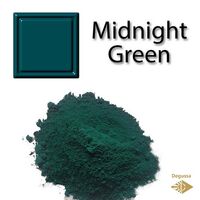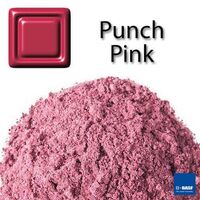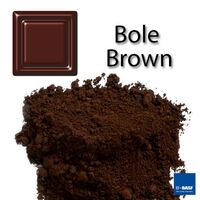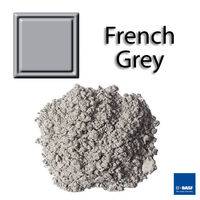What is Sunglow Yellow Ceramic Pigment? What is the cheapest way to make color glazes for your pottery house? The Easy Way to Create All the Colors of the Rainbow
Color code: 4682B4
Quantity: 10 - 450 g.
Firing temperature: 890°C - 1300°C (1640°F - 2380°F) (up to Cone 9)
Lead content: lead-free, 0%
Many people want how to pottery painting, where to paint pottery:
Prepared ceramic pigments, commonly referred to as ceramic stains, expand the potter’s palette with infinite possibilities. Pigments provide a wide range of color possibilities in clay bodies, inglazes, underglazes, and onglazes. They are manufactured using a high percentage of stain. This means they can be applied onto earthenware, greenware or bisque. They have the appearance of silk if left unglazed or will intensify in color when covered with a clear transparent or gloss glaze.
All pigments are intermixable so why not get creative and experiment by missing your own completely new color. During the firing process, the colors fuse more vigorously creating purity, intensity, and brilliance. The colors are stronger therefore less percentage is needed to create vivid colors making them extremely cost-effective.
Usage:
The pigments are powders. They are ceramic stains and oxides and should be mixed with a suitable medium (water) in the approximate proportions of 2 parts color to 1 part medium. These can be diluted further with water for brush application, immersion or flooding. After good drying, the products should be glazed with transparent (translucent) glaze and fired in the kiln at temperatures 950-1160°C (depends on material and pottery glaze). You can use effect glazes in any combination with pigments.
Also, the pigments are more commonly added as colorants in clay bodies and glazes. Some pigments are specifically formulated for clay bodies while some are not suitable at all. When used in a clay, pigments are usually used in engobes and slips as a coating for clay rather than pigmenting the entire body. The exception to this would be using stains to tint porcelain for neriage work. Pigments can be used in underglazes for brushing onto greenware, earthenware or bisque. If used only with water as a medium, some glazes may crawl, so for best results mix with transparent glaze to obtain different color glazes. When using pigments in glazes, usually in concentrations of 1–10%, a little more care must be taken because some pigment systems react with materials in a glaze.
Sunglow Yellow - Ceramic Pigment Stain Oxide by BASF made in Germany
- Brand: Degussa
- Product Code: pigment - Sunglow Yellow - SIE
- SKU: SIE
- Availability: 246
-
0.99€
Available Options
Related Products
MIDNIGHT GREEN - Ceramic Pigments and Stains Degussa Colours
MIDNIGHT GREEN (sometimes also called Eagle green) is a dark cyan. It has been the primary team color for the Natio..
0.99€
PUNCH PINK - Ceramic Pigments and Stains Degussa
Color code: E63E62 Quantity: 10 g. (0,35 oz.) If you need larger quantity, please askFir..
1.19€
BOLE BROWN - Ceramic Pigment Degussa
BOLE BROWN color powder mixed with water provides the cheapest and the most usual way of applying underglaze decora..
0.79€ 0.99€
FRENCH GREY - Ceramic Pigments and Stains Degussa Colours
FRENCH GREY color powder mixed with water provides the cheapest and the most usual way of applying underglaze decoration..
0.99€
Tags: pigment

